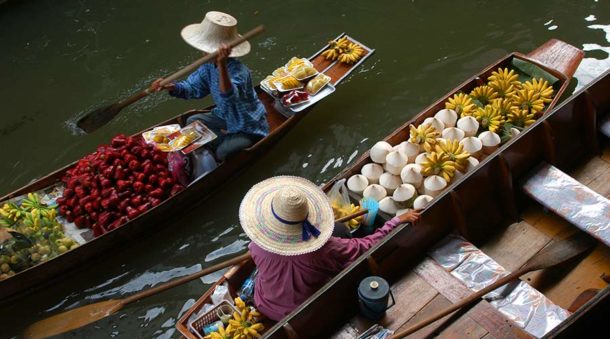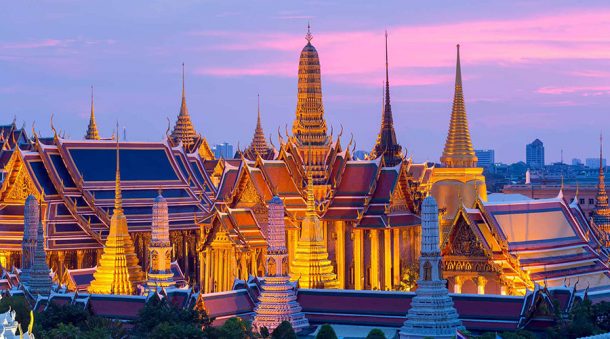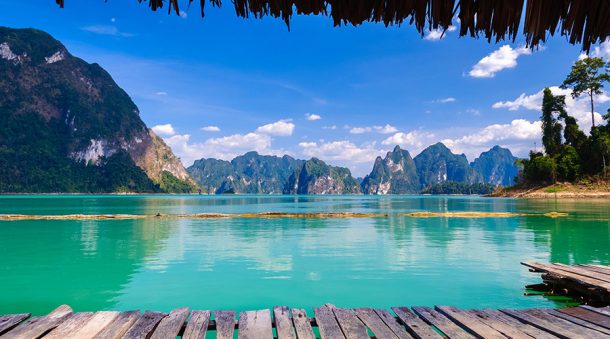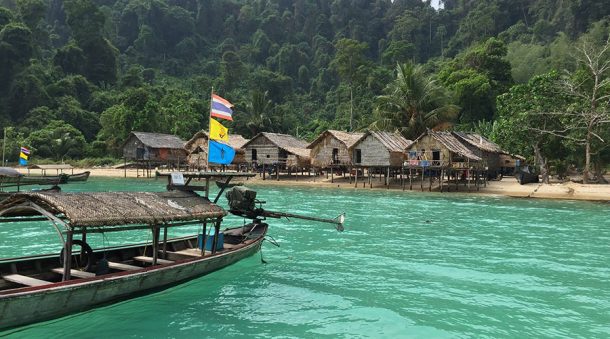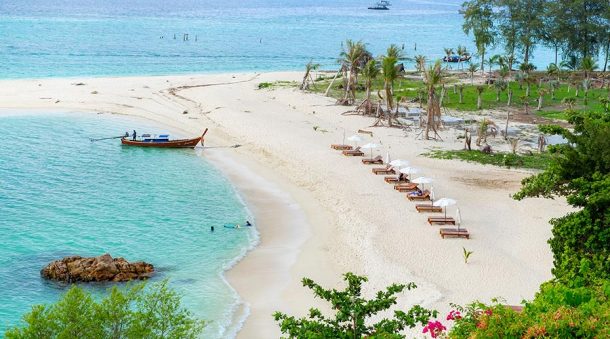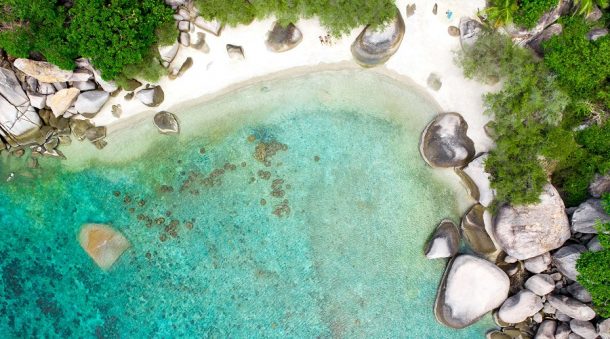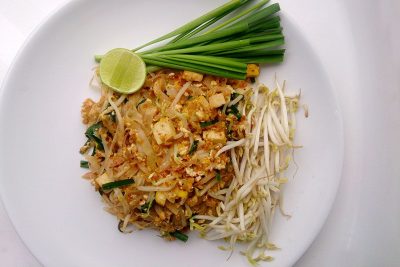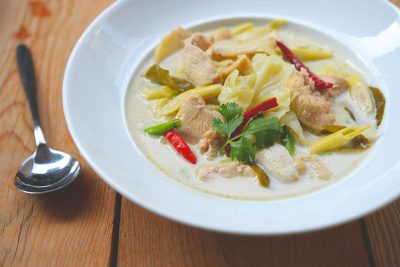THAILAND
Thailand, officially Kingdom of Thailand, is a state of south-east Asia that borders Laos and Cambogia to the east, the Gulf of Thailand and Malaysia to the south, the Andaman Sea and Burma and Laos to the north. The official language is Thai and the most widespread religion is Buddhism, with very small Muslim and Catholic minorities. It is currently a parliamentary monarchy under military junta and the current king is Rama X, who ascended the throne in October 2016.
The history of Thailand begins in a very ancient era. About 10,000 years ago, in the Mekhong valley and in the Khorat a highly evolved and civilized people had already settled, probably a native strain of all subsequent Asian ethnic groups. Many archaeological remains have shown that rice was grown in Thailand already in 4,000 b.C. and that bronze was worked in 3,000 b.C.. The territory covered today by Thailand was reunited, between the VII and the XIII centuries AD, in a single region under the Khmer kingdom of Angkor, who then was bound by Thai princes within the border of today’s Cambodia. The Golden Age of the country began in 1238 AD, followed later by the era of Ayuthaya, during which the economy underwent a strong push, also thanks to contacts with Portuguese, Dutch, English, Danish and French merchants who appeared in Siamo in theearly XVII century. In 1782, king Chao Phaya Chakri took the power with the title of Rama I and he was responsible for the transfer of the Thailand capital to Bangkok and the construction of the kingdom of Thailand with the conformation that it still has today. The Thailand we know today began to take shape with king Rama IV, who was the first who tried to bring the country closer to Western standards of that time. With his son, Rama V, Thailand experienced a remarkable growth: slavery was abolished, a new code of laws was instituted, commercial, military and political relations with the major Western states expanded. The monarchy lasted until 1932, when there was a coup d’etat and the king was forced to accept the constitution and a parliament. In 1939, the name of the country was changed: from Siamo, that means ” Free Country”, to Thailand, or “the land of the Thai”. Within afew years, from 1932 to 1958, Thailand had seven coups and six constitutions. These events only strenghtened the military oligarchy in power and favored the emergence of a tenacious internal opposition, which resulted in the student revolt in October 1973. The coups continued until the 1990s, but democracy was re-established in 1992, free elections took place and the current constitutional order of the country was born. A last coup, this time peaceful, occurred in 2006 and led to the deposition of the unpopular Prime Minister Taskin.
Travel in Thailand
Conscious Journeys proposes different itineraries in Thailand and each one will lead you to discovering unique places and atmosphere, in the different areas of the country. You can decide to take a cruise along the coasts of Thailand (and of Burma), to cross the north of the country, starting and ending in Bangkok and passing through Wat Kai Tia, Ayutthaya, Sukhothai, Chiang Mai and other traditional cities and villages, or visit the south of Thailand in some places still little known, but which have a lot to show.
Thailand doesn’t need any presentations, it is a very famous tourist destination, for its culinary art, for its breathtaking beaches and for its hospitality, but choosing to visit it with a Conscious Tourism tour operator will add something more to your journey because it will show you the daily life, habits and stories of the inhabitants of these wonderful places.
THE ESSENCE OF THAILAND
Duration: 9 days
This itinerary was created for you to experience the most fascinating and important places in Thailand in a 9-day trip.
Great for: Private Trip
DISCOVERING THAILAND : SPIRITUALITY, FORESTS AND TRIBES
Duration: 11 days
This itinerary will show you, with a rich and detailed program, all the best of the natural and cultural variety of northern Thailand.
Great for: Group Tour – Private Trip
HIDDEN TREASURES OF THAILAND
Duration: 11 days
Thailand is a very popular destination and to get you out of the usual circuits we offer you this itinerary to visit its hidden treasures.
Great for: Group Tour
CRUISING IN THE ANDAMANS AND MOKEN EXPERIENCE
Duration: 9 days
With a cruise in the Andaman sea, you could walk on long beaches, snorkel in turquoise waters and explore the tropical forest.
Great for: Private Trip
THAILAND AND KHO LIPE OR KOH TAO ISLANDS
Duration: 16 days
Thailand is one of the best destination for wedding trips, with this journey you will discover amazing islands.
Great for: Private Trip – Honeymoon
Here you can find out about the travel extensions you can request in Thailand.
Great for: Travel extensions
MAIN DESTINATIONS
Phuket: nicknamed the pearl of the Andamans, it is maybe the most famous sea destination in Thailand. With an area of 540 km sq, it is the largest island of the kingdom. A favorite destination for relaxing beach holiday or marine sports.
Bangkok: capital of the country where all the politcs, economic, religious and social activities of the country are concentrated. It is a cosmopolitan city where different races, cultures and religions coexist.
Ayutthaya: is a town situated about 80 km north of Bangkok, it was the second capital of the kingdom for 417 years (from 1350 to 1767). The Ayutthaya Historical Park was recognized by UNESCO in 1991 and it represents a historical and cultural heritage of extraordinary value. At the top of its power, the city was the richest of the East, with over a million inhabitants, but during the XVIII century it lost control over the provinces and the Burmese took advantage of the situation. In 1767,they entered the city, sacking and destroying it: in less than 48h, that which once was one of the richest cities in Asia, was literally razed to the ground.
Chiang Mai: it is the most important city in northern Thailand and for this reason called “the rose of the North”. The city stands on the Ping river, a tributary of the Chao Phraya. The name means “new city” and it was the capital of Lanna’s kingdom for 479 years.
Sukhothai: in Thai language the name means ” dawn of happiness”, this was the first capital of Thailand. Today, to distinguish it from the ancient capital it has been called Sukhothai Thani. It has two UNESCO world heritages archaelogical sites: the Sukhothai Historical Park and the Si Satchanala Historical Park.
THAI CUISINE
Thai cuisine was born from the mixture of different elements of southeast Asian traditions, one of its peculiarities consists in being able to give emphasis to light dishes with strong aromatic ingredients. As in many other Asian cuisines, the variety and the attention of the details are essential values. Thai cuisine is renowned all over the world and known for its extraordinary ability to balance the four fundamental flavors in every dish or in meals in general: bitter, sweet, salty and sour. More specifically, Thai cuisine can be described as the set of 4 regional cuisines: northern, northeastern (Isan), central and southern Thailand. Obviously, they share some basic preparations which undergo regional variations and influences from neighboring countries and regions: from Burmese cuisine, Laos, Vietnam, Cambodia and Malaysia. Do not forget also the royal Thai cuisine, which originates from the kitchen of the cosmopolitan palace of the kingdom of Ayutthaya. It has strongly influenced the tecniques and the use of the ingredients of the cuisine of the central Thailand. From the XVII century also the western influences came.
Nam Taohu is eaten for breakfast and consists of soya milk with the addition of gelatin and tapioca.
Pad Thai is maybe the most famous dish and consists of a bowl of stir-fried noodles and seasoned with eggs, tofu, vegetables, meat or fish and peanut grains.
Som Tam is a salad often prepared in the street stalls containing papaya pesto prepared with peanuts,shrimps, crab, fermented fish, tomato and chili pepper. The taste is very strong and characteristic.
Tom Yum is a soup made with coconut milk, shrimps, lime, mushrooms,lemongrass and hot pepper.
Tom Kha Kai is another soup with coconut milk, chicken and a particular spice called galangal.
Tom Yam Kung is a soup made with tomatos, shrimps and mushrooms, flavored with various aromatic herbs and lots of chili pepper. It is often served in a particular plate with a hole in the center, it is used to host candle that keeps the dish warm.
USEFUL INFORMATIONS FOR THAILAND
How to get
Passaport: necessary for entry into the country, a residual validity of at least 6 months is requested from the moment of the arrival in the country and at least two free pages for affixing a visa. It is mandatory for tourists to always carry their original passport with them. There have been cases of arrests for tourists without a document.
Entry visa: not necessary for touristic stays of less than 30 days. Upon arrival in Thailand at the airport, a stamp will be affixed to the passport which allows you to stay in the country for 30 days. If you arrive by land, the duration of the stay could be limited to 15 days. Any longer tourist visas or for other reasons (study, work, etc.) must be requested from the Thai Embassy or Consulate in Italy. Exceeding the terms of the stay is considered a crime and lead the arrest in case of non-payment of the related fine. From 13th November 2015, it is possible to apply for a multi-entry tourist visa with a validity of 6 months, within which it is possible to stay in Thailand for 60 consecutive days. With a cost of 5000 Thai baht (about 125 euros), it can be requested from all Thai Embassies, Consulates and Honorary Consulates.
For those who came to Thailand from one of the neighboring countires, it is recommended to make sure that the passport’s entry stamps affixed to the border. In case of absence of the stamp, the authorities could require, before repatriation, to return to the land border at their own expense to carry out the expected stamping.
To stay in Thailand beyond the 30 days allowed by the touristic visa, it is necessary to regularize your position with the competent Thai immigration authorities before entering Thailand.
International airport: Bangkok
Thailand climate
The climate is tropical-monsoon: humid heat with heavy rains in the period from August to October; more moderate temperatures in the period from November to February. Average temperatures ranging between 25° C in the months of December-January and 35°- 40° C in the remaining months of the year.
Time zone Thailand
GMT +7
Currency
The local currency is Bath, with a change tax of €1= 39 Bath, approximately.
THAILAND TRAVEL SAFE
The health situation in India is to be considered at risk. Malaria, dengue and chikunguya diseases trasmitted by mosquito bites, are endemic, especially in the eastern and southern regions of the country, with risk peaks in the monsoon and post-monsoon period.
Before leaving, it is highly recommended to make a health insurance which includes, in addition to covering medical expenses, the possibility of repatriation or transfer to another country. After consulting your doctor or vaccination center, here are recommended the vaccinations to do: tetanus, diphteria, hepatitis A and B, typhoid, tubercolosis, poliomyelitis and especially for those who travel during the hot season (from May to September) and stay in rural areas, meningitis and Japanese encephalitis. Antimalarial prophylaxis, vaccination against Japanese encephalitis (difficult to find in Italy) and meningitis are recommended only for those who stayed for long in the monsoon and post-monsoon period in risky areas, especially rural ones. It is a good dea to contact your doctor or competent heathcare facilities for furhter advice.
Other useful precautions are: be careful in choosing both food and drinks, due to the risks deriving from poor hygiene. It is preferable to consume only well cooked and packaged foods, avoiding raw vegetables and fruits that cannot be peeled. Always drink only bottled water and drinks, carefully avoiding ice and infusions only if prepared with boiled water for a long time. This also applies to stays in large hotels. During the summer it becomes necessary to take serious precautions to avoid the risk of dehydration.


